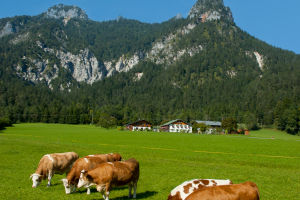A deer is a medium to large ungulate belonging to the order Artiodactyla, which is a group of mammals in the family Cervidae.
They are widely distributed throughout the world, especially in Eurasia and North America. Deer are loved not only for their beauty but also for their important roles in culture, art, and natural ecosystems.
1. Classification and Species:
The deer family includes several different genera and species. Some common deer species include white-tailed deer, red deer, roe deer, sika deer, and moose. These species differ in body size, horn shape, and coat color, but they all share common deer-like traits.
2. Appearance and Features:
Deer are medium to large and often have an elegant appearance. Their bodies are covered with thick, soft hair that varies in color depending on the species, ranging from brown and gray to black and yellowish.
Male deer usually have branched antlers, while female deer may also have antlers in some species, although smaller. The deer's limbs are slender and flexible, adapted for running and jumping.
3. Habitat and Distribution:
Deer are distributed worldwide and primarily inhabit various types of habitats such as forests, grasslands, mountains, and wetlands. They are highly adaptable and can survive in diverse environmental conditions, from the cold arctic circle to the warm tropics.
4. Behavior and Social Structure:
Deer are generally social animals, forming small to medium-sized herds led by a male deer, also known as a stag. During the breeding season, stags compete for mates through fights and displays of dominance.
Deer primarily feed on plants, including grass, young leaves, branches, and fruits. They are most active during dusk and dawn while resting and digesting food during the day.
5. Reproduction and Life Cycle:
Deer mates during the breeding season, and female deer, known as does, give birth to one or two fawns when the conditions are favorable. The fawns stay with their mothers, who are responsible for their care and protection. The antlers of young deer are not fully developed at birth and gradually grow as they mature.
6. Cultural Symbols and Conservation:
Deer hold symbolic meaning in many cultures, representing qualities such as strength, agility, glory, fertility, and a connection with nature. They are frequently depicted in art, literature, and traditional stories, serving as a source of inspiration.
Despite being beloved by humans, deer face various challenges. Habitat destruction, illegal hunting, and human disturbances pose threats to their survival. Therefore, implementing conservation measures, such as establishing nature reserves, regulating hunting practices, and promoting habitat protection, is crucial for maintaining deer populations and preserving their ecosystems.
In conclusion, deer are beautiful and enigmatic creatures that play essential roles in nature and human culture. Their appearance, behavior, and life cycle are filled with captivating characteristics, making them subjects of study, conservation efforts, and admiration.


